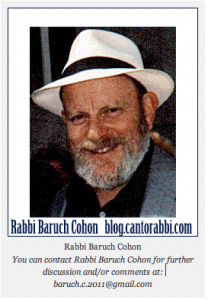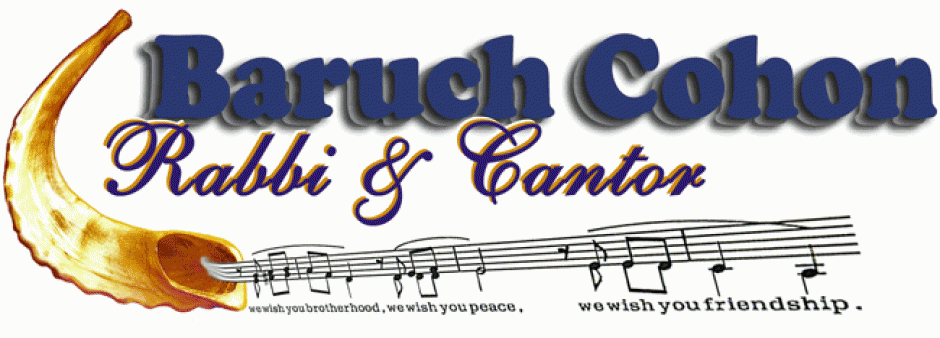
ENTERING ELUL – R’ey – Deut. 11:26—16:17, by Rabbi Baruch Cohon
This year, the Sedrah called R’ey – “See here!”—coincides with the first day of Rosh Hodesh Elul, beginning the month that anticipates our New Year 5777. The name of this month is spelled with the four Hebrew letters aleph, lamed, vav, lamed, which are the initials of the words Ani L’dodi V’dodi Lee, from the Song of Songs: “I belong to my Beloved and my Beloved is mine,” symbolizing the ideal loving relationship between G-d and the Jewish People. Indeed, this week’s reading describes us as “children of the L-rd your G-d…chosen to be a special nation among all the nations on Earth.”
Both the Torah portion and the Haftorah of Rosh Hodesh from the prophet Isaiah teach us how to implement this sacred relationship. Moses notifies the people about the blessings and curses they can expect to receive after they enter the Land. If they keep the Mitzvos they will be blessed at Mount Gerizim and if they violate them they will be cursed at Mount Eival. Then he reviews several areas of those Mitzvos, including destroying Canaanite idolatry and rejecting idol-worshippers among the Israelites – even executing them. Israelites must sanctify selected places in the Land for Divine worship. Moses follows with details of the Seventh Year (the year of sh’mitah) when crops should not be harvested, when Hebrew slaves were to be freed and debts forgiven. Then come dietary laws and the festivals of the religious calendar. Interestingly enough, the occasions not mentioned here are exactly the ones Isaiah mentions in two identical sentences at the end of our Haftorah: “It will be, that every month on the New Month, and every Sabbath on the Sabbath, all humanity shall come to worship before Me.”
A word about location is called for. Where did the Israelites sanctify places of worship? Shiloh, and Hebron, and finally Jerusalem (regardless of what our current enemies say). Does that mean that some day the entire human race will go to Jerusalem to worship? In fact, right now many Christians and other non-Jews visit Jerusalem frequently on religious tours. Still, we need to consider that this prophecy goes beyond geographic limits. This is truly a combined vision of universal commitment to a noble way of life. For Moses, for Isaiah and for many other visionaries throughout our history, this is the goal of all our Torah study and the fulfillment of all our prayers.
Progress toward this goal calls for action as well as prayer. As we enter the month of Elul, the month of preparation for the new year, we can at least consider some practical plans to reach this goal. Let’s make our observance more significant, our business dealings more ethical, our family time more meaningful – just for starters.
R’ey, said Moses, “See here!” I led you this far. Now your life is your own to build for blessing or curse. May it be for blessing.



Rabbi Baruch, I began my day with your Blog, and I am so enthused with it, and the message it contained that I am sure today will be a very good day for me. I especially enjoyed what Elul stands for…I am my beloved’s and my beloved is mine.\Thank you many times over. I hope and pray that you will continue your Blogs for many years to come, and that I may read them when they arrive, Shalom